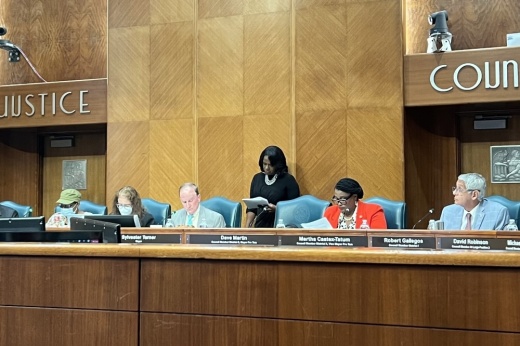As previously reported by Community Impact Newspaper, redistricting occurs every 10 years based on data from the decennial U.S. Census and public input. City Demographer Jerry Wood designed the map to comply with city requirements and the Voting Rights Act of 1965, while reflecting the population changes that were seen through the 2020 census.
To be in compliance with the city of Houston, the populations in the districts must maintain a relatively equal population, include easily identifiable geographic boundaries, not break up county voting precincts, avoid the diminishing of voting power by demographic concentration or dilution, and preserve incumbent and constituent relations.
According to the data, District C—which spans areas of the Heights, Montrose, Garden Oaks and Meyerland—was overpopulated by 15%, while District H—an area that covers parts of Woodland Heights, Northside Village and Northline—was underpopulated by 17%.
During a July 13 Houston City Council meeting, Wood presented the proposed redistricting changes. Under the draft plan, District C saw changes to Freedmen’s Town, Rice University and parts of its far southwest corner.
If the draft plan is approved by council members, Rice University will be moved to District D; the southwest corner where the Robindell neighborhood resides will be moved to District J, which was asked of constituents during the redistricting town hall; and Freedmen’s Town and the Fourth Ward will be moved to District H. According to Wood, these changes were made to bring the population in District C down.
However, residents of Freedmen’s Town said they would prefer to stay with District C so that all the historic districts could stay together. During the July 13 public hearing for the redistricting draft plan, Charonda Johnson, vice president of the Freedmen’s Town Association, said the proposal to move to District H is not welcomed and expressed a sincere need for her neighborhood to stay within its current district boundaries.
District H is a Hispanic-driven community, and Johnson believes this will hinder her neighborhood’s ability to gain resources they need. Johnson said under District C Council Member Abbie Kamin, Freedmen’s Town has finally found a path and leeway, and it is because of this that they would like to keep her as a partner.
“It’s so hard to get representation, and it’s so hard for us to be represented,” Johnson said. “We actually have that now with council after so many years.”
District H Council Member Karla Cisneros, who will not be holding office when the new boundaries go into effect, told Johnson that she understands the concerns, but that the district also has a prominent African American community. She said she advises Freedmen’s Town to vote for someone who will see things the way they do.
“Because of the diversity of Fourth Ward, the addition of Fourth Ward to District H does not negatively affect the ethnic ratios that District H is required to maintain,” Cisneros said in an email to Community Impact Newspaper. “The proposed map brings District H’s population up to 203,484 residents—still slightly less than the average, but within an acceptable range that meets federal guidelines and maintains essentially similar demographic percentages.”
With the proposed plans, District H also gained voting Precinct 890 from District I. According to Wood, this area is along Commerce Street and Texas Avenue. With this, District H could grow by about 3,500 people; however, it includes the Harris County jail, so 600 people from the population are incarcerated, Wood said.
Members from the League of United Latin American Citizens also spoke at the public hearing, asking once again for equal representation. As previously reported by Community Impact Newspaper, 45% of Houston’s population is Latino, but there is only one Latino representative on Houston City Council, District I Council Member Robert Gallegos.
Houston has 11 single-member districts and five at-large positions. To challenge this, LULAC has pursued a lawsuit and charter amendment to replace the at-large positions with five single-member districts.
“Houston is the most diverse city in the country, except when it comes to its local government,” LULAC Member Ivan Sanchez said.
Another public hearing for redistricting will take place July 13 at 7 p.m. and again July 20 at 9 a.m. The proposed draft plan map is not final, and continual feedback is welcomed. The deadline for public submissions of plans is July 20.





